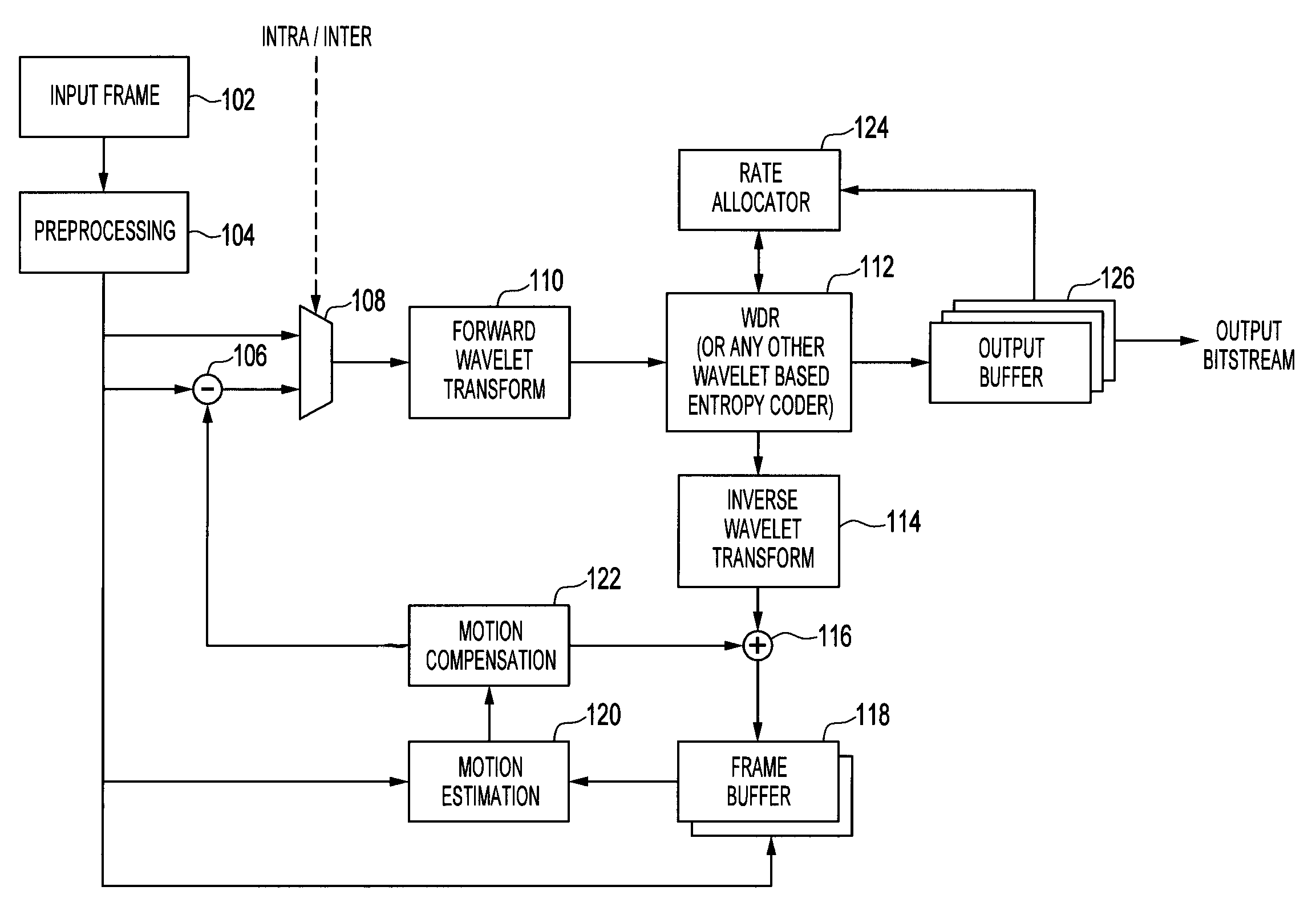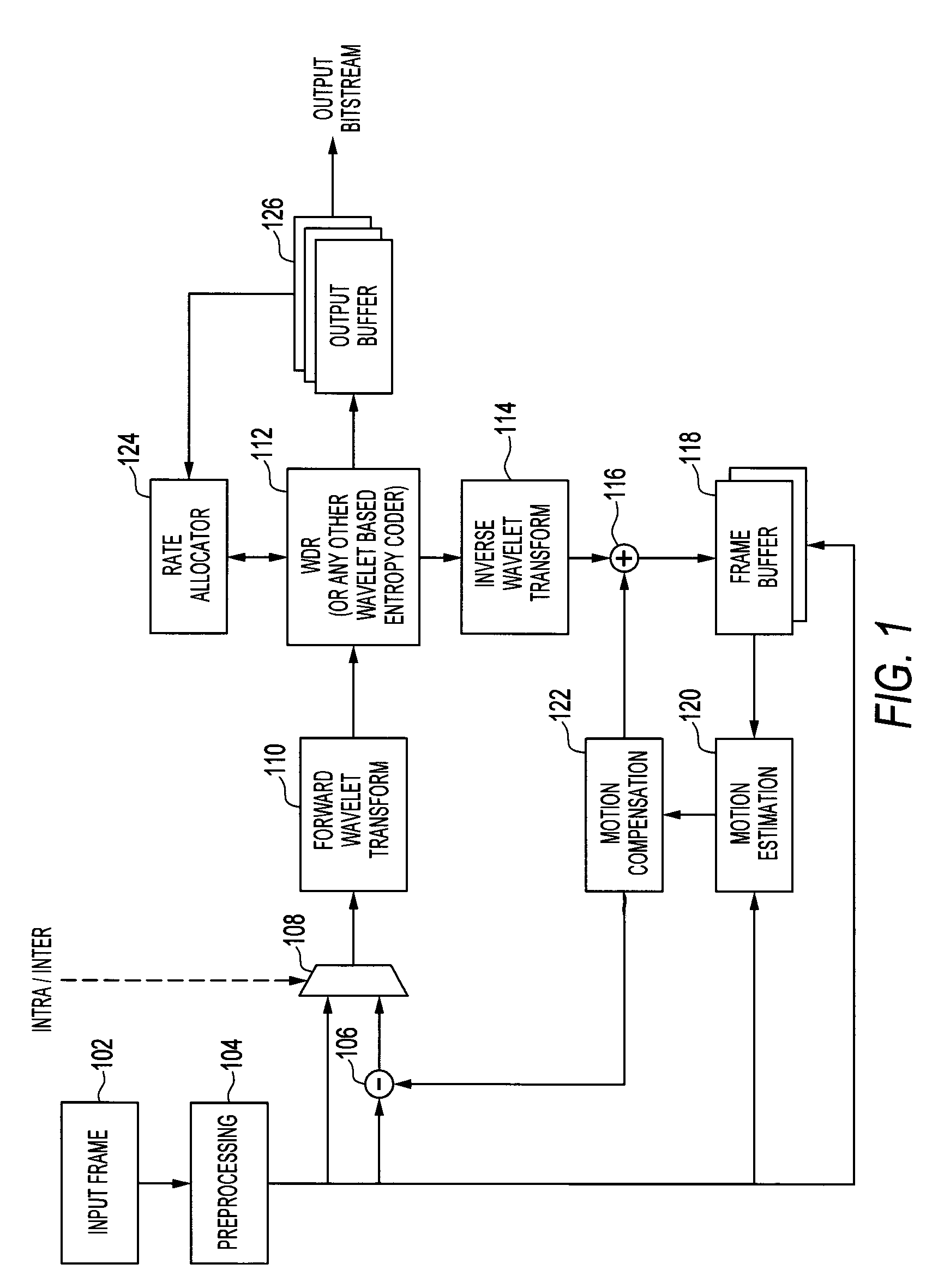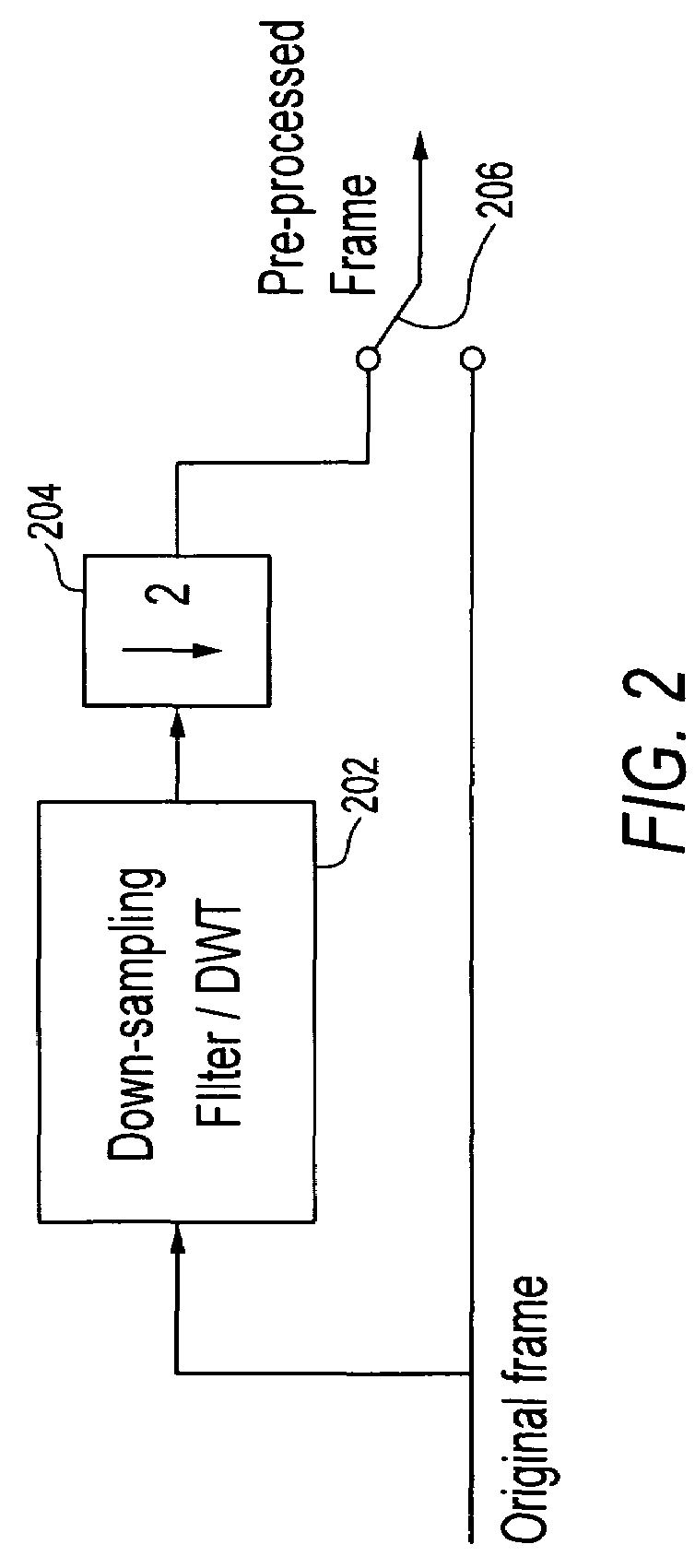Video encoding methods and devices
a technology of video encoding and video data, applied in the field of video encoding, can solve the problems of degrading the video being placed on the channel, and affecting the quality of the video being encoded, so as to reduce the complexity of operations
- Summary
- Abstract
- Description
- Claims
- Application Information
AI Technical Summary
Benefits of technology
Problems solved by technology
Method used
Image
Examples
Embodiment Construction
[0012]The invention is directed to methods, devices and systems for encoding video data. Embodiments of the invention provide coding that is responsive to the channel upon which the encoded data will be transmitted, and also the nature of the video data, to achieve good quality encoding that makes an efficient use of the channel.
[0013]In describing the preferred embodiments, and setting forth the scope of the invention in the claims, the term “frame” encompasses both video frames and portions thereof. Method steps and device components typically operate on portions of video frames, as is known in the art, and such portions may be referred to as blocks, sub-blocks, windowed portions, etc. The term “frame” as used herein therefore encompasses both entire video frames and portions thereof, such as blocks and sub-blocks or selected portions of the frame. Frame, as used herein, could also be used to describe the entire frame or its decimated version or processed version. The term “frame”...
PUM
 Login to View More
Login to View More Abstract
Description
Claims
Application Information
 Login to View More
Login to View More - R&D
- Intellectual Property
- Life Sciences
- Materials
- Tech Scout
- Unparalleled Data Quality
- Higher Quality Content
- 60% Fewer Hallucinations
Browse by: Latest US Patents, China's latest patents, Technical Efficacy Thesaurus, Application Domain, Technology Topic, Popular Technical Reports.
© 2025 PatSnap. All rights reserved.Legal|Privacy policy|Modern Slavery Act Transparency Statement|Sitemap|About US| Contact US: help@patsnap.com



